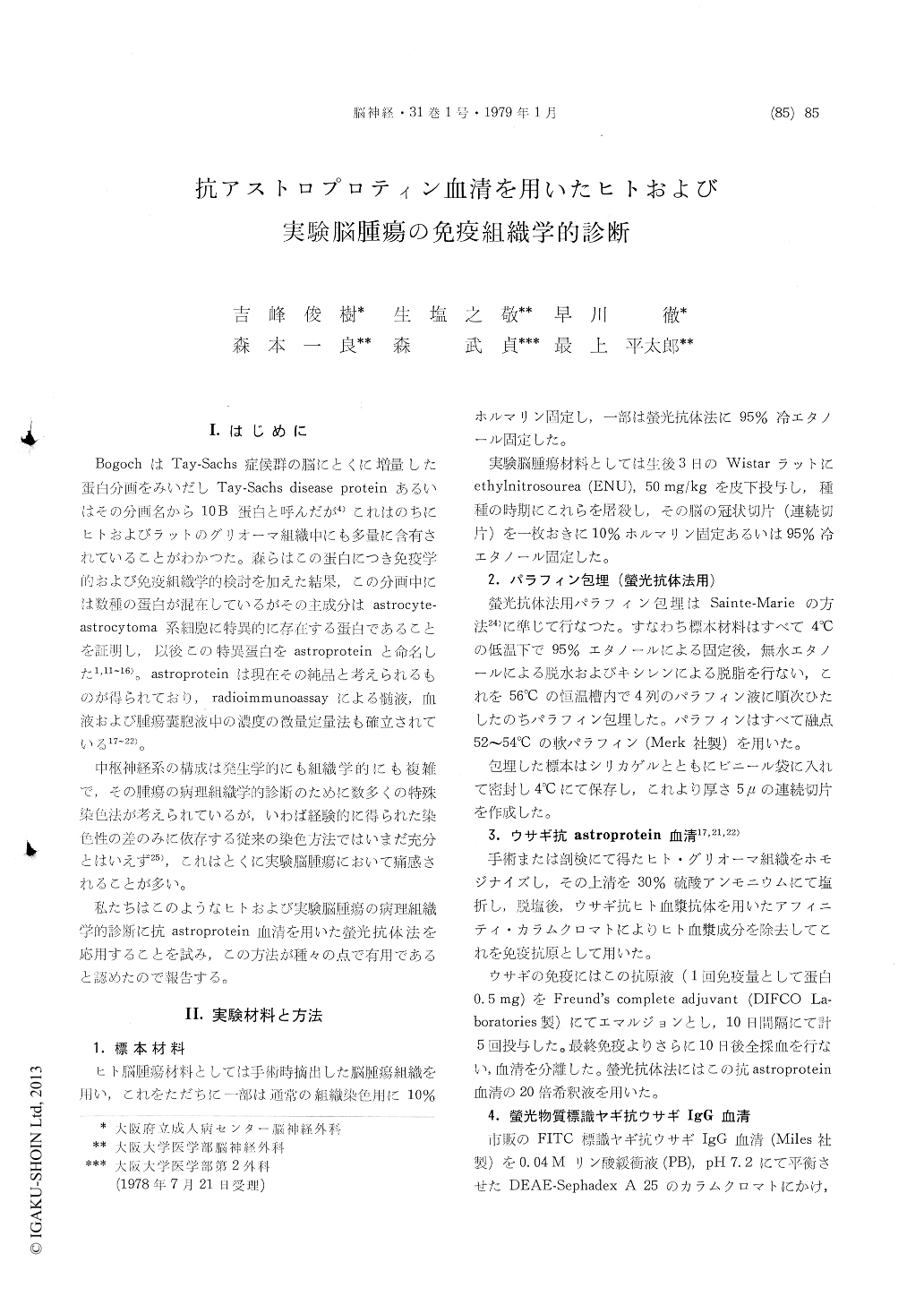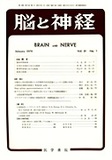Japanese
English
- 有料閲覧
- Abstract 文献概要
- 1ページ目 Look Inside
I.はじめに
BogochはTay-Sachs症候群の脳にとくに増量した蛋白分画をみいだしTay-Sachs disease proteinあるいはその分画名から10B蛋白と呼んだが4)これはのちにヒトおよびラットのグリオーマ組織中にも多量に含有されていることがわかつた。森らはこの蛋白につき免疫学的および免疫組織学的検討を加えた結果,この分画中には数種の蛋白が混在しているがその主成分はastrocyte—astrocytoma系細胞に特異的に存在する蛋白であることを証明し,以後この特異蛋白をastroproteinと命名した1,11〜16)。astroproteinは現在その純品と考えられるものが得られており,radioimmunoassayによる髄液,血液および腫瘍嚢胞液中の濃度の微量定量法も確立されている17〜22)。
中枢神経系の構成は発生学的にも組織学的にも複雑で,その腫瘍の病理組織学的診断のために数多くの特殊染色法が考えられているが,いわば経験的に得られた染色性の差のみに依存する従来の染色方法ではいまだ充分とはいえず25),これはとくに実験脳腫瘍において痛感されることが多い。
Human and ethylnitrosourea-induced rat brain tumors were studied by the indirect immuno-fluorescence technique using antiserum to astro-protein (an astrocyte-astrocytoma cell specific cerebroprotein) with a view to applying the method to the immunohistological diagnosis of the tumors.
Specific fluorescence seen in astrocytes and astro-sytoma cells was proved contributory to the diagnosis of human astrocytomas and glioblastomas. On glioblastoma preparations, sarcomatous regions were easily identified by the lack of fluorescing components.
Experimental brain tumors of animals are often difficult to be diagnosed by the conventional stainings. No positive stain was seen by Mallory's PTAH stain in all the types of the induced ratbrain tumors in the present series, whereas the immunofluorescence technique disclosed valuable differences between the tumors. The rationale of using antiserum to human astroprotein in rat specimens is explained by the immunological cross-reactivity of the antigens between human and other mammalian species. One type of the tumor showed overwhelming fluorescing cells and was diagnosed as astrocytoma. Another tumor was diagnosed as oligodendroglioma because of the negative results on the immunofluorescence study. HE stain of the third type of the experimental tumor showed a few, exceptionally large, bizarre cells intermingled with other predominating, smaller, uniform cells. On the immunofluorescence study, only the eccentric cells were fluoresced. These findings were interpreted as those of oligo-dendroglioma with some astrocytic components or of mixed glioma of oligodendroglioma and astro-ytoma.
One coronal section of the grossly normal brain of a rat in this series had a small, well circumscribed lesion of cellular proliferation. On the immuno-fluorescence study, the cytoplasm of most of the cells concerned was fluoresced and the shapes and arrangements of the cell bodies and processes were examined in detail. The nature of the lesion was considered as one of the pre- or early neoplastic changes induced by the agent.
Immunohistological examinations using antiserum to astroprotein were proved useful in the histo-pathological diagnosis of human as well as rat brain tumors. Further study with the method will be expected to contribute to the identification of tumors with diagnostic difficulties or whose origins are under debate.

Copyright © 1979, Igaku-Shoin Ltd. All rights reserved.


